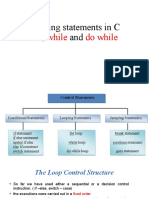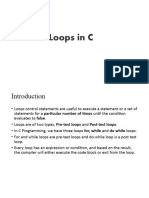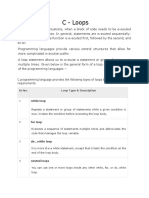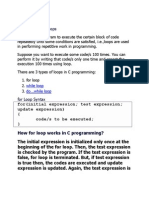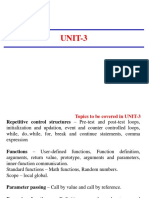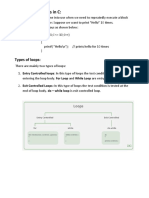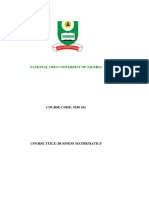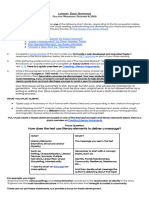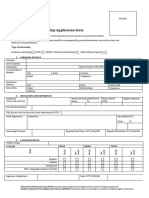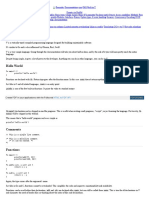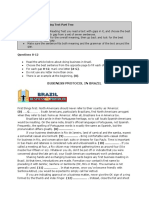0% found this document useful (0 votes)
12 views5 pagesFor Loop in C Programming Language
The document explains the basics of for loops in C programming, detailing its syntax, flow, and various forms. It includes examples of simple and nested for loops, as well as the use of multiple initializations and test conditions within a single loop. The document serves as a guide for understanding decision control statements and iterative processes in C.
Uploaded by
JAYARAJ J PILLAI INMCA20-25Copyright
© © All Rights Reserved
We take content rights seriously. If you suspect this is your content, claim it here.
0% found this document useful (0 votes)
12 views5 pagesFor Loop in C Programming Language
The document explains the basics of for loops in C programming, detailing its syntax, flow, and various forms. It includes examples of simple and nested for loops, as well as the use of multiple initializations and test conditions within a single loop. The document serves as a guide for understanding decision control statements and iterative processes in C.
Uploaded by
JAYARAJ J PILLAI INMCA20-25Copyright
© © All Rights Reserved
We take content rights seriously. If you suspect this is your content, claim it here.
/ 5

